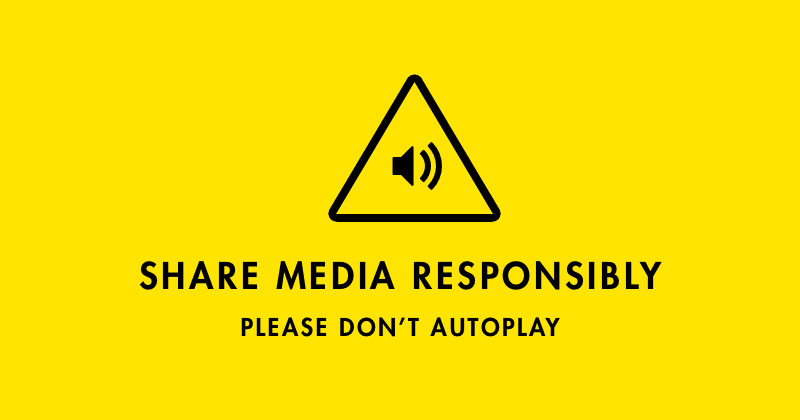Imagine sitting at your office desk during lunch hour and scrolling over to the website of one of your favorite artists. Without notice, a massive eruption of noise shoots out your computer speakers. Not only are you embarrassed by this sudden burst of sound, your co-workers will be annoyed by the interruption as well.
The culprit? Autoplay. Just like those long-derided flash videos, autoplay causes Internet users to shake their fists in frustration. Consider these scenarios:
- Most Internet users keep a number of tabs open at any given time, meaning it’s difficult to determine where or how to click the mute button.
- If multiple songs and videos are embedded on the homepage, imagine the commotion of them starting at the same time.
- The visitor is listening to music on iTunes or Pandora and wants to continue streaming without interference from other sounds.
Autoplay is widely known as the most reviled tactic of today’s digital world. According to the 2013 Digital Future Report, 84 percent of respondents aged 25 to 34 have left a website due to an “intrusive or irrelevant” advertisement. Even on a music-oriented website, the reaction is often similar. The best marketing strategy for an artist isn’t to hijack a person’s experience with content, but to rely on more subtle techniques that can hold their interest. When used properly, audio and video on your site can greatly enhance the visitor experience.
Transitioning from Autoplay to More Audience-Friendly Content

Some major companies such as YouTube, ESPN and ABC continue to use autoplay on their media-heavy sites. Facebook is in the process of unrolling an autoplay video ad unit as well.
Despite its popularity among these media heavyweights, autoplay is still considered bad usability for websites in the music industry. Although artists are wise to offer a selection of songs and videos in order to pique interest, site visitors should have the option to access these digital assets of their own accord.
Addressing the Technical Elements of Audio and Video
Autoplay causes many visitors to start looking for the mute button, and that’s if the audio or video works at all. The visitor’s browser may not have the capability to play the files without system interruption due to slow connection speeds or other technical malfunctions. If your website causes the computer to freeze, visitors will immediately close the tab and lose interest in learning more about your music. Share audio and video as an option – not a requirement – so that visitors can determine when and where to engage in your message.
Designing a Website to Draw Attention Towards Digital Elements
Audio and video content has consistently been proven to increase engagement and on-site conversation rates. In order to ensure that visitors still receive the message, draw attention to audio and video capabilities as they navigate your site at their leisure. Clearly mark all player controls – volume, stop/buttons, etc. – so that visitors find them to be easy and accessible. A strategically placed button in the header or sidebar gets the job done. It’s important to give your visitors the ability to check out your audio or video at their own discretion while creating a comfortable online environment. While you should always search for ways to make a site dynamic and engaging, it’s important to gauge reaction from your audience and tweak your strategy if necessary.
From a relationship standpoint, the main goal for your artist website is to make sure that each visitor doesn’t exit your site without hearing your music or seeing your video. By designing a user-friendly experience without the use of autoplay, you can convince new and old fans alike to listen more closely.
